NEGenWeb Project
Church/Catholic
Franciscans
![]()
![]()
![]() The Franciscans in Omaha
The Franciscans in Omaha![]()
![]()
![]()
Chapter XXV
St. Joseph's Church
ST. JOSEPH'S CHURCH,
SIXTEENTH AND CENTER STREETS,
OMAHA, NEBRASKA
EARLY CATHOLICITY AT OMAHA
The Nebraska Territory was thrown open to white settlers in 1854. For the Catholics among the pioneer settlers of Omaha City the first Mass was said in the court room of the old state house' by Rev. W. Edmonds, a German priest, coming from St. Joseph, Missouri, later stationed at Iowa City, Iowa. The date of the first Mass was May 14, or 15, 1856. The acting governor Cuming donated a number of lots; but owing to threats uttered, since the lots were part of a park, we are told, the lots were abandoned and the first church named St. Mary's erected on the site donated by the Council Bluffs and Nebraska Ferry Company.
ST. MARY'S CHURCH, 1856,
Messrs. (James?) Ferry, Thos. O'Connor, Murphy and Mrs. Margaret Cuming nee Murphy, Catholic wife of the acting governor, gathered subscriptions for the brick structure with stone foundation, 24x40 feet, erected on Eighth Street, near Howard Street. Meanwhile Rev. Scanlon said Mass in the residence of the acting governor on Nineteenth and Douglas streets. St. Mary's was dedicated in August, 1856. Succeeding pastors or visiting priests were: Fathers Kavanaugh, 1858; Francis Cannon, O. S. B., August, 1858-August, 1859; Augustine Wirth, O. S. B., James Power, etc. In May, 1859, the Rt. Rev. James O'Gorman, Vicar Apostolic of Nebraska, arrived and made St. Mary's his cathedral until St. Philomena's was erected in 1857 and dedicated March 29, 1868. Old St. Mary's was then turned into a school, sold later to the Burlington railroad and razed.
ST. MARY MAGDALEN'S CHURCH FOR THE GERMANS
The overwhelming majority of the early Catholics of Omaha were natives of the Emerald Isle. Still there were a few Germans among them. When the Rev. Otto Groenebaum was stationed at the cathedral, he had charge of all the Germans of the city, yes, practically of all Germans west of Omaha and north of the Platte river, being called as far as West Point and the vicinity of the present Humphrey (Mr. H. Wilde). Soon it was suggested to erect a church for the Germans at Omaha. It was in 1868. Heretofore we find some German names in the old Omaha church records which contain baptisms from near Platte Center, West Point, etc. We quote a few German names without, as a rule, the place or town being mentioned. Thus we find: Vincent Buerkle (Burkley), and Teresa Stelzer, Mr. ---- Guenther, Maurice Wagen and Anna Bloemer, his wife; Anton Koesters and Margaret Woll; Martin Deibel and Elizabeth Woll; Jacob and Frances Linder, Bernard and Henry Koesters, Maria Barbara Kimmel; John and Marie Freitag; Joseph and Maria Bunzer Mueller, Arthur Blomer, Helen Kleffner, Herman and Anna M. Menke, Godfrey Riebhausen, the Frenzer brothers and others.
To organize a German parish, a meeting was called at St. Philomena's and the Rt. Rev. Vicar Apostolic J. M. O'Gorman was present. When the Bishop saw only about thirteen present, he exclaimed: 'Father Groenebaum, what will you do? You have only a baker's dozen at this meeting." But these men were possessed of courage and energy. The first, whose names have been handed down to us, were: Peter, John and Joseph Frenzer, Henry Koesters, Michael Kappes, Peter Kill, Nicolaus Mergen, Peter Mies, Nicholas Scheid, George Kleffner, Joseph Granacher, Andreas Wassermann, John Mertens, Anton Seisle, John Baumer, Godfrey Riebhausen (Ruebhausen) and Mr. Weit.--See True Voice, Tenth Anniv. Ed., 1913.
These men purchased a lot, 66x132 feet, on the north side of Douglas Street (between Sixteenth and Seventeenth Streets). On Christmas day "the Little German Church" or "Doll Church", as it was jokingly called, was ready for divine service. Fr. Otto J. Groenebaum was the pastor and also the first teacher of the parochial school, (the third in Omaha, Rev. J. Ostdiek), opened in spring, 1869. The next teachers were Mr. Dieckmann (summer 1870), and other laymen until in 1873 the Sisters of the Precious Blood, of O'Fallon, Missouri, took charge. The efficient training and beneficial
529
![]()
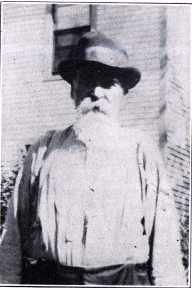
J. Schmitz |
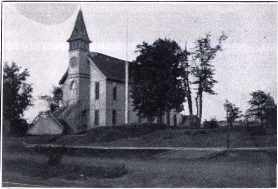
First St. Joseph's Church and School, |
Mr. and Mrs. J. Burkhart |
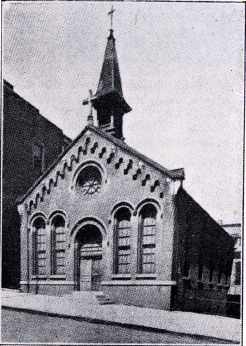
St. Mary Magdalen's Church, Omaha, 1902 |
moral influence of the Sisters were much appreciated by non-Catholics and even by Jews, who willingly paid the small tuition fee. The difficulty was to find enough room for the accommodation of the pupils. Hence the pastor put up a two-story pastoral residence, 16x24 feet, on the north side of the church. Thus room was gained for one more class room in the basement (of the church). Now the Benson children applied for admission and room was again at a premium. Accordingly a two-story school had to be erected in the rear of the church at the cost of $2,500. The attendance at this school in 1881 was 260 pupils. About forty Polish families and those from Hungary and some Italians belonged to the parish about that time.
REV. O. J. GROENEBAUM
Fr. Otto J. Groenebaum left Nebraska owing to some difficulty with the Very Rev. Riordan,
530
![]()
Vicar General, and labored in Wisconsin and Illinois. He was born August 28, 1837, at Neuenkirchen, near Rietberg, Westphalia, Germany, and attended the gymnasium at Rietberg, where there is a Franciscan friary. On May 28, 1864, Otto J. Groenebaum landed in the United States, was ordained at Milwaukee, Wisconsin, February 15, 1867, and immediately began his labors in Nebraska. Owing to the scarcity of priests and especially those speaking German, Fr. Groenebaum had charge practically of all the Germans west of Omaha as far as West Point, St. Charles, Fremont, Columbus, and Humphrey (north of the Platte River). After leaving Omaha, he labored for a time at St. Mary's Fond de Lac county, Wisconsin, and at another parish. In 1883 he was admitted into the diocese of Chicago and sent to organize St. Nicholas parish at Evanston, Illinois, where he passed away July 9, 1897. Fr. O. J. Groenebaum was a model of a truly pious and zealous priest and a father of the poor and destitute .--R. I. P.
FATHER GEORGE J. GLAUBER,
PASTOR OF ST. MARY MAGDALEN'S,
JULY, 1881-MAY, 1904
Finding St. M. Magdalen's school overcrowder (sic), Fr. Glauber with unbounded faith in the growth of Omaha, held a meeting of the parishioners and in 1884 purchased lots for another German church on South Center street, between Sixteenth and Seventeenth streets, with a house containing six rooms which afterwards served as a Sisters' residence, from Mr. Simeral for the consideration of $10,000. The deed was made out in the name of Rev. G. J. Glauber, and the trustees elected by the people, Jacob Burkard and John Schmitz. To the witticisms aimed at Fr. Glauber for "the site out in the wilderness without street car and viaduct connection with the city proper", Fr. Glauber replied that within a few years the site would have both. His prediction was verified after some years.
When St. Joseph's church and school was opened, the unexpected result was that of about 260 families only 100 remained loyal to the mother church.
THE SILVER JUBILEE OF ST. MARY MAGDALEN'S,
DECEMBER 25, 1893
During the 25 years of its existence 1,332 had been baptized, fifty converts had joined the church, 214 had been joined in holy wedlock, 380 had been admitted to First Communion, 403 had been buried from the church and 1,400 educated in its school.--On the jubilee day Fr. O. J. Glauber sang the solemn High Mass, at which he was assisted by the Rev. M. A. Colaneri and Rev. McLaughlin as deacon and subdeacon.
THE CONFLAGRATION
Joy was soon turned into sorrow. On February 3, 1894, a fire broke out at the Boston store and St. Mary Magdalen's church and all its contents, the school and Sisters' home were destroyed. The loss amounted to $13,000.00, very little of which was covered by insurance. Fr. Glauber succeeded in saving the sacred vessels. Dr. Grossman kindly received the homeless pastor and Sisters into his home on Seventeenth and Douglas streets.
THE NEW ST. MARY MAGDALEN'S CHURCH
Like the fabled phoenix the church soon rose from its ashes with an adjoining small brick hall and pastoral residence. On Sept. 29, 1894, the church was dedicated by the Rt. Rev. R. Scannell, Bishop of Omaha. After some years the brick church was sold to Rayden Brothers. On May 2, 1902, ground was broken for the new St. Magdalen's at the present site (19th, and Dodge streets).
RT. REV. MSGR. BERNARD SINNE
Rev. G. Glauber was succeeded at St. Mary Magdalen's by Rev. Bernard Sinne. The new pastor is a native of Elsen, Westphalia, where he first saw the light on December 9, 1887. He made his classical studies at the gymnasium of Paderborn, attended then the universities of Innsbruck, Freiburg in Switzerland, Bonn, and the Priests' Seminary at Paderborn. His ordination to the priesthood occurred May 5, 1904, at Freiburg. The following August he was appointed pastor of St. Mary Magdalen's at Omaha. During the twenty-six years Fr. Sinne played an important part in the development of Omaha Catholicity and community. In December, 1925, Fr. Sinne was made a Domestic Prelate by Pope Pius IX.
FOUNDING ST. JOSEPH'S PARISH 1886
Father George J. Glauber, in 1884 purchased a site for a new church for the Germans and Poles in the southern part of the city. The deed was made out in the name of Rev. George Glauber, Jacob Burkhard and John Schmitz, the two latter had been chosen trustees of the parish by the mass meeting of the people. The lots were on Center Street between Sixteenth and Seventeenth Streets in Hartman's Addition.
ERECTION AND DEDICATION OF ST. JOSEPH'S CHURCH
About 1886 work on the new Church was begun. The Creightons proved themselves gen-
531
![]()
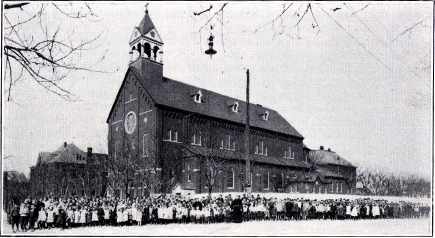
St. Joseph's Church, Omaha
erous benefactors. Mr. J. Creighton gave a sum of $1,000 and Mrs. Creighton paid for the interior furnishings such as the altar, communion rail, confessional, pews and vestment case, which must have cost about $2,000 or more. At the dedication on September 11, 1887, by the Rt. Rev. James O'Connor, Bishop of Omaha. Fr. Pacific Kohnen, O. F. M., of Columbus, delivered the sermon. Father John Daxacher, chaplain of the St. Joseph's Hospital and Fr. M. A. Colaneri assisted in saying Mass on Sundays. At first the new parish had Mass on two week days, and on Sundays a low Mass at 8 and a high Mass at 10:00 o'clock. Father G. 3. Glauber remained pastor for two years. But when Fr. Charles Breitkopf became his assistant, the curate came much of the time. He soon won the hearts of all, so that the trustees asked the Bishop to appoint him pastor. His Lordship, however, refused until the newly ordained should have had two years experience.
Father G. J. Glauber, the founder of St. Joseph's, was transferred to Hartington in May, 1904, after twenty-three years of service at Omaha. At the new place he suffered a paralytic stroke some months before his death and, after a temporary improvement in his condition, passed to his reward on March 21, 1909.
The Rev. George J. Glauber was born at Buffalo, New York, on May 2, 1853, the son of John Baptist and Elizabeth (Hummel) Glauber and brother to the Rev. Ludger Glauber, O. F. M., for many years master of novices at Teutopolis and finally guardian of the Old Mission at San-
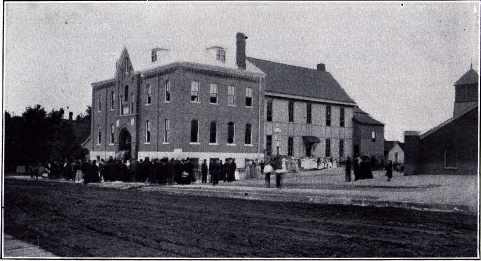
Old St. Joseph's School, Omaha
532
![]()
ta Barbara, California. George Glauber attended school in his native city, made his classical studies at St. Joseph's, Buffalo, and at St. Jerome College, Ontario, and completed his higher studies at Niagara University and in the Seminary of Our Lady of the Angels, Suspension Bridge, New York. His ordination to the priesthood occurred December 22, 1877. Having joined the Vicariate Apostolic of Nebraska, he came to Omaha and was assigned as assistant to Lincoln, whence he attended some missions. On March 22, 1878, he was appointed to Hastings, to which were attached the missions of Harvard, Fairfield and Aurora on the east, and all the territory to the west and south to the boundary of the state. Father Glauber erected the first churches at Hastings, Wheatland, Orleans and Fairfield. On July 23, 1881, he was called to Omaha and given charge of St. Mary Magdalen's.
After Fr. Glauber's demise the funeral services were held at Hartington. A brother of the deceased accompanied the remains to Buffalo, New York, where interment took place. Father Glauber was a zealous and excellent priest. May he rest in peace.
REV. CHARLES BREITKOPF,
PASTOR OF ST. JOSEPH'S
JULY, 1888 RESP. 1890-1894
After being practically pastor for almost two years, Fr. Breitkopf received his appointment as pastor in 1890. Having become acquainted with the needs of the parish and with its people, who idolized him, Fr. Breitkopf accomplished great things. First of all he set to work to reduce the high rate of interest on the parish indebtedness. As the people reposed the greatest confidence in him, they entrusted him with their savings at a low rate of interest enabling him to refund the debt. He later helped the people in a similar manner. Fr. Breitkopf also fell in line with the city and had the property paved, and the buildings remodelled (sic) and beautified. Especially was the parochial school, taught by the Sisters of Precious Blood of O'Fallon, Missouri, the apple of his eye. Repeatedly the parishioners offered to build him a pastoral residence, but the pastor declined the offer. Mr. Fr. Krittenbrink, a non-Catholic owner of a brickyard, offered to furnish the brick gratis--similar offers were made by others--but Fr. Breitkopf turned them all down. He was contented with his one room in the school building and preferred to reduce the parish indebtedness and improve the fine school, which was the envy of the city.
While remodelling (sic) and improving the buildings, Father Breitkopf did not forget the spiritual side. St. Joseph's Men Society was made independent of the mother parish; the Christian Mothers' Society was organized, the Altar Society, the Young Ladies' Sodality, St. Cecelia Society, the Young Men Society and the Confraternity of the Stations of the Cross followed. Each society had its devotions and meetings on different Sunday afternoons.
A Dramatic Club was also formed, and the young men and married men, the young ladies and married ladies took their turn in providing entertainments for the amusement of the people and, at the same time, funds for the upkeep of the parish. There was such harmony and brotherly feeling as is seldom found, and everybody was happy. The pride of all, the parochial school was a model structure and was the envy of the whole city. In a short time, without any outside aid, the congregation was able to pay off annually the sum of $1,000.
THE POLES ORGANIZE ST. PAUL'S PARISH
St. Joseph's parish comprised a number of Poles, Hungarians, etc. As Fr. Breitkopf was a Silesian, who spoke also Polish, the Poles gave him a stately saddle horse, to induce him to preach in Polish also. As their numbers increased, the Poles organized their own parish and erected a church in Sheely.
When the Rt. Rev. Bishop wanted the Polish parish incorporated he found difficulties. The Germans sympathized with the Poles and soon found themselves involved in the same difficulty regarding the deed of their own church property. Though Jacob Burkard had resigned as trustee before this, his name was on the original deed and he became involved in the dispute. The trustees refused to turn over the church property without some clause protecting the rights of their countrymen and refused to. sign the new deed. The matter came into court -at the time of the American Protective Association's feverish activity-and caused much excitement and trouble in the courts. The case was even appealed to the Papal Delegate and finally settled satisfactorily.
Father Breitkopf also was very good to the poor, especially when they were sick and some doctors at times refused their services. The famous Doctor August Jonas visited the poor and refused any remuneration for his services. When Fr. Breitkopf once offered him a donation for a case attended to, he inquired whether it came from the patient, he was answered in the negative. He even refused the money, when Fr. Breitkopf now offered it to buy feed for his horse. The rich were wondering, how the famous practitioner found time to occupy himself so much with the poor.
533
![]()
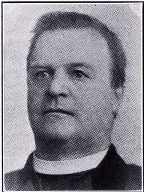
Rev. Otto Groenebaum |
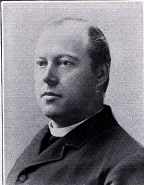
Rev. George Glauber |
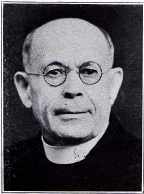
Rev. Carl Breitkopf |
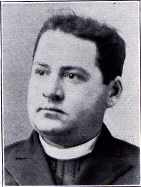
Rev. Wm. Jungels |
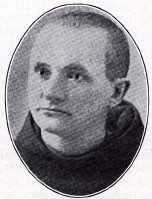
Rev. Maurice Baukholt, |
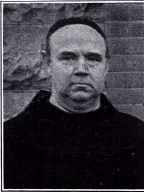
Rev. Pacific Kohnen, |
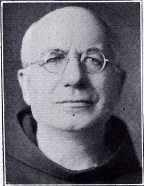
Rev. Simon Schwarz, |
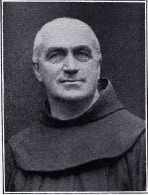
Rev. Timothy Magnien, |
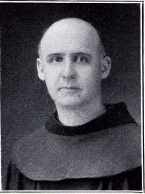
Rev. Ephrem Muench, |
534
![]()
|
|||